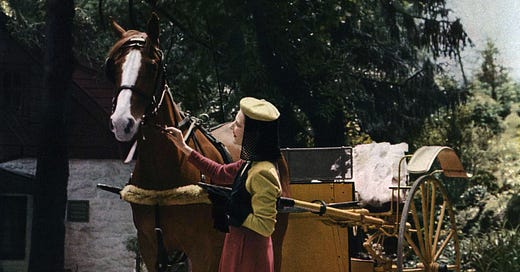“The clothes [Clare Potter] creates reflect her own blend of town career and country living… clothes that distill fashion but never exaggerate it, that move easily from one season and one year to the next.” – Wilhela Cushman, Ladies’ Home Journal, October 1947
The “American Look,” classic American sportswear characterized as “a style of dress predicated on comfort, unfettered movement, functionality, versatility and accessibility,” evolved in the 1930s and 1940s, and is mostly closely associated with the fashions of Claire McCardell. She was not the only “Claire” to make her mark designing easy-to-wear, easy-to-care-for yet elegant clothing—Clare Potter shared her understanding of how modern American women wanted to dress and feel. The clothes Potter designed complemented her lifestyle, something mirrored in those of her contemporary Claire McCardell—both women designing for themselves, and through that creating what we now consider classic American sportswear. They were their own muses and best models. As Vogue explained in 1948, Potter lived “the kind of life for which she designs, most successfully, clothes not of the city or of the country, but with an affinity for both, clothes with a trick of looking equally well at resorts, polo games, in town.”
Potter appears to have had an affinity for sports and the outdoors since childhood. Born in 1903 in Jersey City, Clare Meyer went on to study at the Pratt Institute in Brooklyn—first fine arts, then switching to costume design on the suggestion of a teacher who had seen an outfit she had made for herself. At Pratt, she met and married J. Sanford Potter, an architect and engineer. Soon she left school; later recalling, "Maybe it was because... I was still trying to do things on my own and my ideas didn't always fit into the school's program—anyhow, for some reason Pratt found a job for me before I had finished the course." That job was with Edward L. Mayer, a wholesale dress manufacturer in the Garment District, first designing embroidery patterns for mid-market sportswear then the garments themselves. In 1929, the Potters spent six months in Mexico, where Clare began to define her visionary approach to color. On their return in 1930, she started designing for Charles W. Nudelman Inc., a ready-to-wear firm, where she was soon one of the few American designers promoted by name on labels and in advertisements.

“While the rest of the world travelled only to Paris, Clare Potter travelled the world. She mixed her paints in Bermuda, swatched colors in Mexico, eagle-eyed the crowds in Le Touquet and Biarritz. But first and last, her most important jumping-off place for ideas has been her beloved American countryside.” - Bonwit Teller ad, November 1940
Potter spent her days designing in New York City before returning each night to her husband at their home in West Nyack, just forty miles up and across the Hudson, in Rockland County. The Potters purchased the old Dutch stone farmhouse in 1935; retaining the original exterior, Sanford completely remodeled the interior. Vogue described the new space “as modern, as personal, and as colorful as the clothes that Clare Potter designs.” The couple named it Timbertop Farm.
Keep reading with a 7-day free trial
Subscribe to Sighs & Whispers to keep reading this post and get 7 days of free access to the full post archives.




